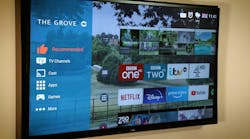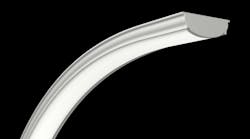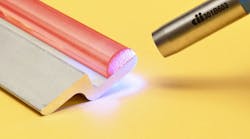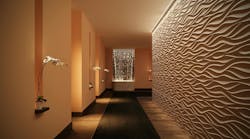Date Announced: 23 Mar 2010 -- CIE 2010 Lighting Quality & Energy Efficiency in ViennaFor delegates at the CIE 2010 conference organised by the International Commission on Illumination (CIE), the message was clear: "A more efficient use of daylight augmented with the use of more efficient lamps and the latest lighting technology now enable us to save energy without sacrificing good lighting. And the technologies required are already available." The international conference, held under the banner of "Lighting Quality & Energy Efficiency", took place in Vienna from March 14 to 17, 2010. The event gave academics, lighting industry professionals, designers, researchers and representatives of regulatory authorities the opportunity to discuss best practice and the latest developments in the field of light and illumination. Recommendations were also made for reducing the amount of energy used for lighting - according to the International Energy Agency (IEA), lighting accounts for 19 percent of global electricity consumption.After the disappointing outcome of the UN Climate Change Conference in Copenhagen and the failure of politicians to take any binding decisions, a number of international organisations are now looking at ways of reducing worldwide energy consumption. Against this backdrop, the CIE 2010 conference chose lighting quality and energy efficiency as its theme. Leading experts in the fields of science and industry, as well as representatives of regulatory bodies looked at the latest technological and scientific trends, and political approaches to the problem. Recommendations to energy consumers were also discussed.A huge proportion of energy consumption goes on lighting: it accounts for 19 percent of the total global electricity use, and up to 86 percent in developing countries.But modern lighting electronics are helping to improve the energy efficiency of light generation - and reducing CO2 emissions into the bargain. Lamps with high luminous efficacy, electronic control devices, luminaires optimised in terms of light distribution, use of daylight and effective light management also ensure excellent lighting quality, which in turn improves the individual's health and sense of wellbeing.Speaking about the objectives of the conference, CIE President Franz Hengstberger said: "Good lighting brings safety, security and a better quality of life. But people are unaware of the amount of energyconsumed by lighting and its impact on the environment. We already have the technologies required to provide good quality, energy-efficient illumination, so our aim is to highlight designs which will reduce energy consumption quickly and sustainably without sacrificing lighting quality. Even a small cut in the amount of electricity used for lighting around the world would remove the need to build additional power plants."High-quality illumination thanks to energy-efficient, smart control systemsResearch has shown that three-quarters of lighting technologies currently installed in public buildings are outdated and inefficient. Only around 4 percent of these buildings are equipped with control systems including sensors which adjust lighting in line with available daylight and occupancy. Fitting energy-efficient lighting systems could reduce electricity consumption by 40 to 70 percent."The smartest, most effective way of saving energy is to use daylight. Intelligent lighting control systems have the highest energy-saving potential. Lighting which is automatically adapted to levels of daylight consumes up to 60 percent less energy than conventional, non-adjustable solutions," explains Peter Dehoff, head of strategic lighting applications at lighting systems manufacturer Zumtobel.Pioneering solution: LEDs replace light bulbs and energy-saving lampsOne of the hottest topics at the conference was light emitting diodes (LEDs), which offer significant environmental and energy-efficiency benefits compared with conventional light bulbs and energy-savinglamps.Professor Wout van Bommel, an international lighting consultant and former CIE President, believes energysaving lamps are more of a temporary solution; the future, however, belongs to LEDs. "LEDs will completely replace conventional light bulbs. They are still fairly expensive, but significantly more effective than alternative lighting technologies. Disposing of LEDs is also straightforward. Switching to LEDs now would make a major contribution to reducing global electricity consumption," he emphasises.Looking ahead to the future Professor van Bommel predicts that "futuristic daylight products such as transparent OLED windows, solar windows which store heat from sunlight and use it to heat rooms, and translucent concrete will all help to increase the levels of daylight in interior spaces."About CIEThe International Commission on Illumination (French: Commission Internationale de l'Eclairage - CIE) is the technical, scientific and cultural non-profit organization for light and therefore devoted to worldwide cooperation and the exchange of information on all matters relating to light and lighting, colour and vision, photobiology and image technology. Since its inception in 1913, the CIE has been accepted as representing the best authority on the subject and as such is recognized by ISO as an international standardization body.CIE comprises 40 member bodies from countries around the world. The Central Bureau of CIE is located in Vienna, Austria.
Contact
Mrs Martina Paul, General Secretary CIE phone: +43(0)1-714-31-87-0
E-mail:[email protected]
Web Site:www.cie.co.at




